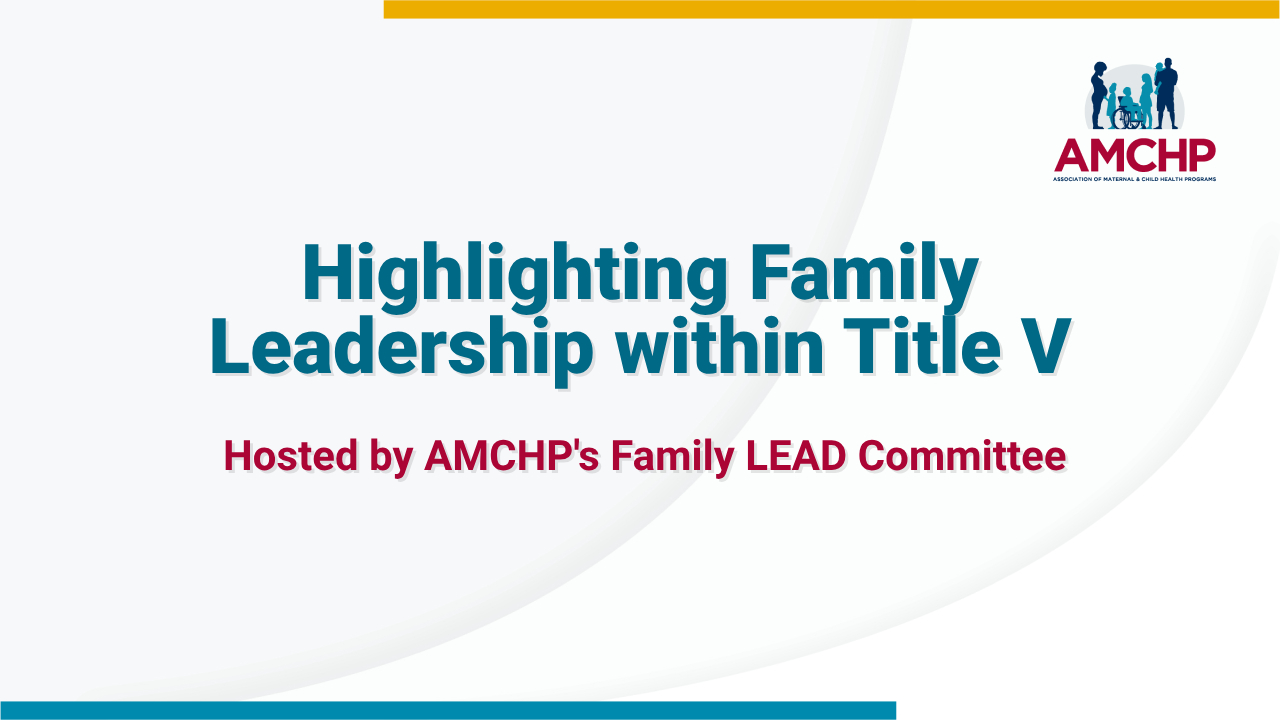Back to the future – that’s how current public health emphasis on assessment and policy might be viewed from a Title V perspective. Because the roots of Title V of the 1935 Social Security Act date back to the dawn of the 20th century, and it grew from a focus on using data to affect policy.
1921: The Federal Children's Bureau
The Federal Children’s Bureau was created in 1912 “to investigate and report on the status of children and on their common as well as special needs” and on “the welfare of children and child life among all classes of our people.” The bureau used these reports to stimulate action. Results included uniform birth registration, the school lunch program, child labor laws, maternal health standards and the basis for the…
Sheppard-Towner Maternity and Infancy Act of 1921
1981: Title V Becomes a Block Grant
In 1981, Title V became a block grant but retained key features of the original legislation. These amendments established the groundwork for current aspects of the program, such as the needs assessment. However many critics, including those in Congress, decried the lack of accountability mechanisms and cited initial reductions in funding and decreased federal oversight as weakening programs in some states.
The Social Security Act of 1935
The Social Security Act of 1935 included Title V, again authorizing grants to states, this time to “extend and improve” services. The grants targeted maternal and child health (MCH), children with special needs (then known as “crippled children”), and child welfare services. While the MCH component continued to focus on prevention, the CSHCN component introduced grants for medical care. States were funded by formula to establish service units and were required to submit state plans to obtain funding.
Over the next six decades, special program emphases were added to Title V, as the program adapted to identified needs and to the enactment of other federal health programs. Maternity and Infant Care (MIC) and Children and Youth (C&Y) projects developed under Title V in the 1960s to respond to problems of mental retardation and poverty conditions, respectively. These projects proved to be effective comprehensive care models. Projects for neonatal intensive care, family planning and dental care were added by the 1970s. Later years brought programs on school health, genetic diseases, newborn screening, training and research. All of these made significant contributions in advancing the field of maternal and child health. At the same time, new federal programs, including community health centers and Medicaid, resulted in some loss of influence for the Title V federal and state program.
Title V Today
Title V today gives states flexibility with accountability for systemic approaches to improve health access and outcomes for ALL women, children, youth and families. Title V has been dubbed the framework, the infrastructure and even the “glue” for states’ and territories’ overall strategies, policies and programs. Over the years, many strengths have evolved from Title V: flexibility, adaptability, broad mission focused on national health objectives, responsiveness to states’ and territories’ needs, and accountability for performance. While the dollars for Title V may be a relatively small proportion of a state’s total budget for family health programs, used effectively they can have a big impact.
1989: Title V Amendments
The 1989 amendments brought increased accountability for Title V while retaining flexibility. Although some now dub the Title V Block Grant a “blockagorical,” the 1989 amendments were an attempt to retain the historic strength of the program in assessing, planning and responding flexibly to state specific needs, while introducing stronger national accountability. Advocates came together with state MCH programs and AMCHP to urge Congress to seek this balance in the law.
Recent years showed continued tension between flexibility and accountability. Over the course of the 1990s, Congress frequently proposed federal legislation to create more and larger block grants. Some proposals included recommendations to consolidate the MCH Block Grant program with others, such as WIC, family planning, immunizations and other public health programs. Some also proposed turning the Medicaid program into a block grant. As of 2003, Congress hasn’t enacted any of these proposals. The State Children’s Health Insurance Program (SCHIP) was enacted as a capped entitlement to the states, allowing states more flexibility than they have with Medicaid. At the same time, this decade saw passage of the Government Performance and Results Act (GPRA), which was one of the policy forces that drove development of performance measures under Title V. These policy tensions between block grant and categorical programs and flexibility and accountability are likely to continue.
Additional Resources
- Maternal and Child Health Pyramid of Health Services (graphical depiction of TItle V MCH Services)
- Leading State Maternal and Child Health Programs: A Guide for Senior Managers. This manual is organized into chapters dedicated to “the big picture,” or the theoretical framework of maternal and child health, and “the ABC’s,” which delve into the day-to-day operational aspects of MCH programs.
- Conceptual Frameworks of Title V
- Essential Public Health Services
- The Core MCH Services Pyramid
- Systems of Care
- Key Concepts of MCH
- Systems Building
- Family Involvement
- Population Base
- Conceptual Frameworks of Title V
- MCH Timeline: History, Legacy, and Resources for Education and Practice, traces the history of maternal and child health in the U.S., provides in-depth modules on topics such as MCH 101, MCH Systems of Care, Infant Mortality and MCH Performance and Accountability, and allows you to search for topical areas of interest.





